Introduction
The dotted cover die booklets that appeared between 1935 and 1955 represent a very complex and rewarding area of Canadian philately. Unitrade presents what at first seems like a daunting number of different subtypes for each of the booklets issued between BK28 and BK50. The key to being able to enjoy collecting these is to first understand the significance of the different rate pages for each booklet and to see how each booklet fits into the issue as a whole, and then to incorporate the different Harris front and back cover types. Now, the bilingual booklets present a considerably more complex sub-area of these issues, and deserve their own post. So, for the purposes of this discussion, I am going to limit my coverage to English and French.
The simplest of these booklets are those at the beginning and end of the life of this design, so those from the 1935 Pictorial Issue and the 1954 Wilding Issue. The Mufti Issue and Karsh Issues, working inward toward the middle of the period are slightly more complex, and then the War Issue, which falls right in the middle of the period is the most complex, and it is here that many collectors can become overwhelmed.
It is our hope that by presenting charts that show how the different cover types fit together, and then graphic illustrations of the different types themselves, that we can assist you in your journey to begin a meaningful, and in-depth collection of these booklets.
Many of the observations made here will apply to the other issues as well, though probably to a lesser extent.
BK32 - 1c Green War Issue
The 1c green is one of the more complicated booklets in this issue, as it spans the life of the issue. In addition to the different cover types, one can collect examples where the panes are printed on both smooth vertical wove paper, and horizontal ribbed paper, with the gum showing the same variations as on the sheet stamps. It is possible to find plate flaws on the front and back covers, and finally, the green colour used to print the cover can be found in an unusually bright and deeper green, in addition to the usual minty, milky, pastel green usually found.
The chart below gives an overview of the main rate page and cover types, as well as an illustration of the front and back cover types:
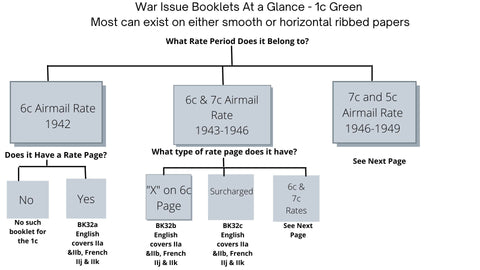


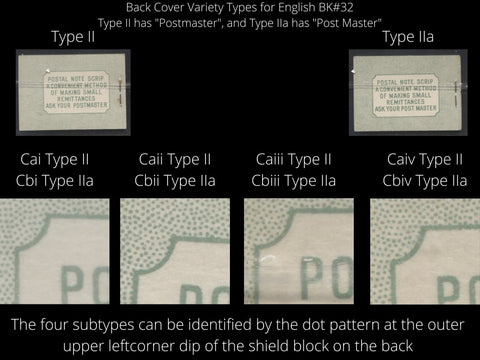
BK33 - 2c Brown War Issue
The 2c brown is one of the least complicated booklets of the issue, even though it also spans the life of the issue. All the booklets I have examined so far have the panes printed on smooth, vertical wove. However, I am sure there are later printings with the panes printed on horizontal ribbed paper, even though I have not yet seen any. Like BK32, the brown colour of the cover can be found in a very dark shade. I have not yet found any plate flaws on the 2c covers, though I am sure some probably do exist.
Here here is the relevant chart, as well as the front cover types. It should be noted that only one back cover type was used.

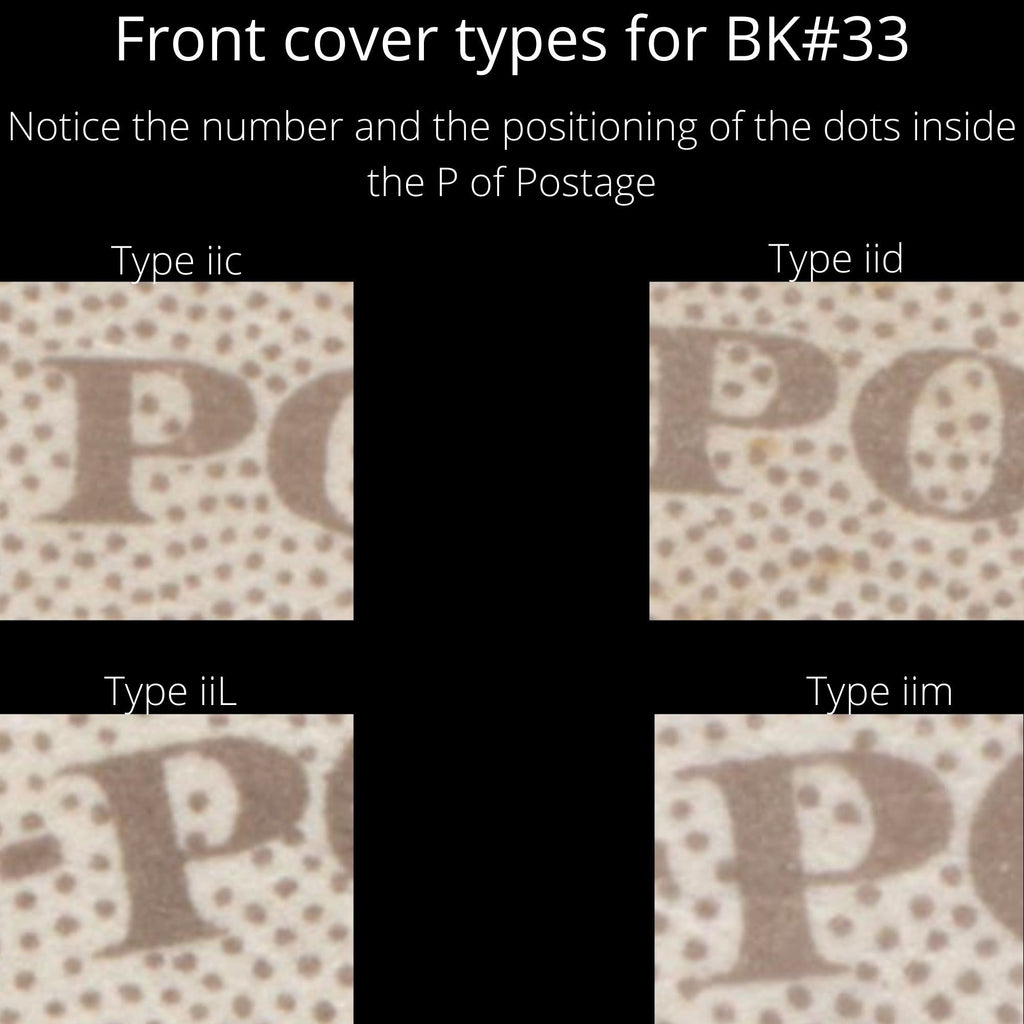
BK34 - 3c Carmine War Issue
The 3c carmine is reasonably complex for a value that only had a life of 10 months, being replaced by the 3c rosy plum in April of 1943. This is the first of the booklets to exist with three different staple sizes: 17 mm, 14 mm and 12 mm. These smaller sizes can be quite a bit scarcer than the standard 17 mm staple. There is also some colour variation to be found on the covers. I have not yet found any plate flaws on the covers. All of the booklets that I have seen have the panes on smooth vertical wove paper, and I think, based on the fact that it was replaced in 1943, that this is the only paper to be found on the panes from this booklet.
Here is the chart and relevant front cover types. Like the 2c, this value utilized only one back cover type.

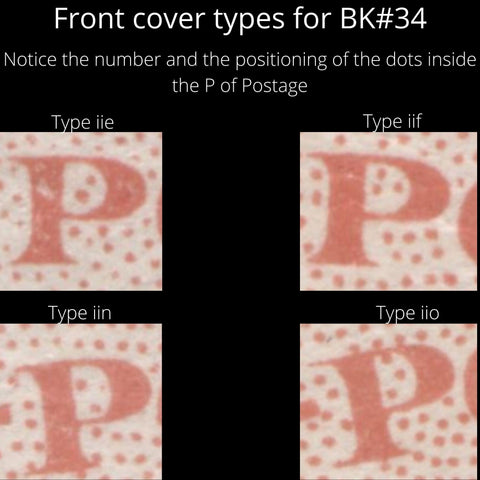
BK35 3c Rosy Plum War Issue
This value is very complicated, due in large part to the vast number of shades that can be found in the rosy plum, as well as the paper and gum variations. This value was used from April 1943 to late 1949, so the variations run the gamut, from smooth vertical wove paper and crackly cream gum to horizontal ribbed paper with a satin sheen gum, that is somewhat patchy and streaky. Again, I have not yet found any plate flaws on the covers, but would note that the covers can be found in both dark and light versions.
Here is the relevant chart and illustrations of front and back cover types.
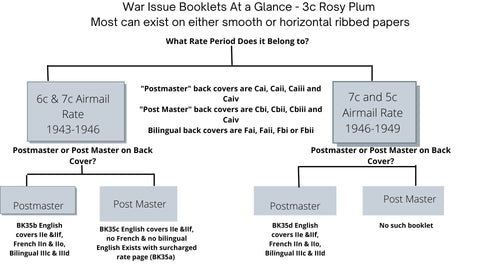
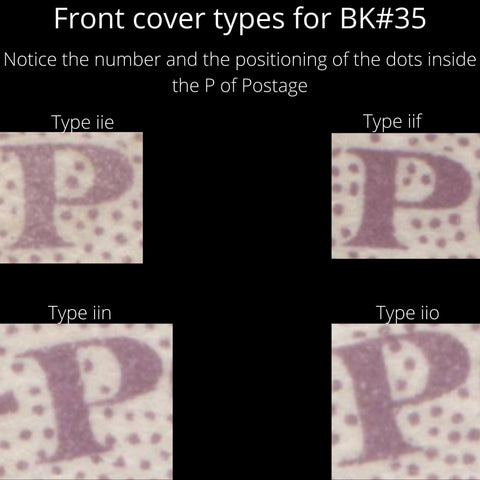

BK36 4c Carmine War Issue
Of all the larger, regular sized booklets from this issue, this is by far the most complicated. Like the 3c Carmine, this booklet can be found with all three staple sizes. In addition, the French booklets can be found with 4 different front cover types instead of two. There are the usual shade, paper and gum variations on these, as well as the shade variations with the orange used to print the covers.
Here we have two charts and illustrations of both front and back cover types.

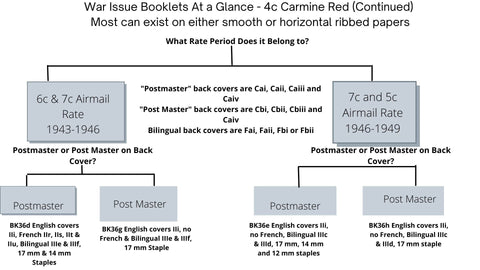
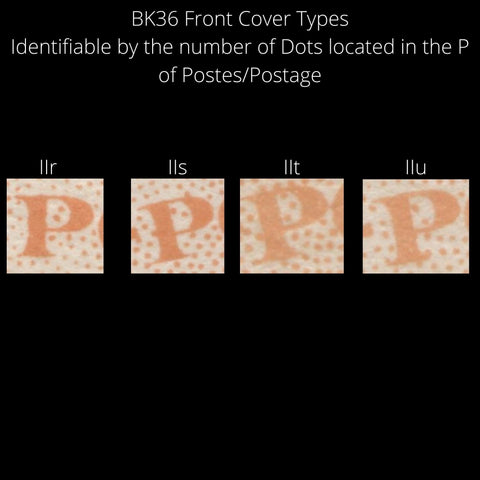
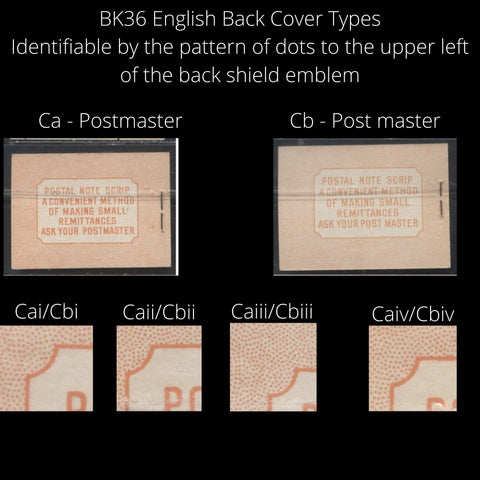
BK37 1c Green, 2c Brown and 3c Carmine War Issue
This is the least complicated booklet, and appears to have been done away with sometime in 1943 (probably April), being replaced by the smaller chewing gum booklets. I have found one booklet showing a large flaw on the crown located in the coat of arms.
There were three front cover dies, and only one back cover type. Here is the relevant chart, and illustration of the three front cover types.
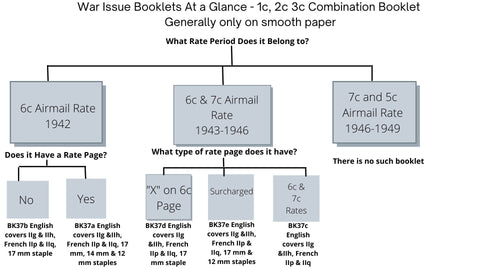
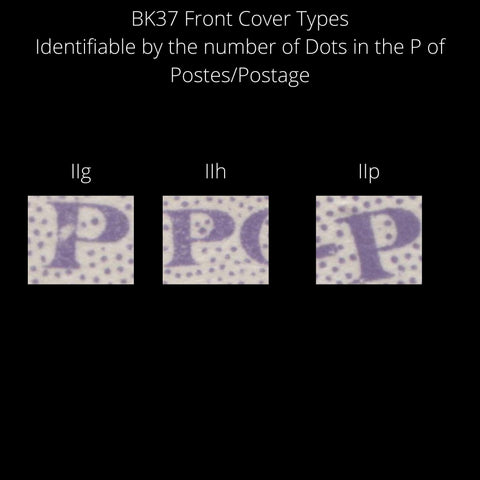
BK38 - 1c Green, 3c Rosy Plum and 4c Carmine War Issue
This booklet, of all the booklets in the series is the most complicated, due to the very large number of possible front and back cover combinations possible. In addition, this booklet contains the 3c rosy plum, so there are a large number of possible shades. Paper and gum varies quite considerably also, with smooth vertical wove, and horizontal ribbed papers. I have not seen any plate flaws on the covers as yet, and little colour variation, as these covers are black and white.
Here is the relevant chart, as well as the front and back cover types for the English and French language booklets.

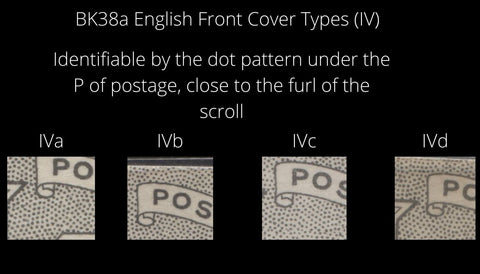
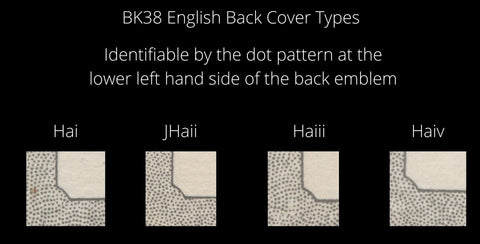
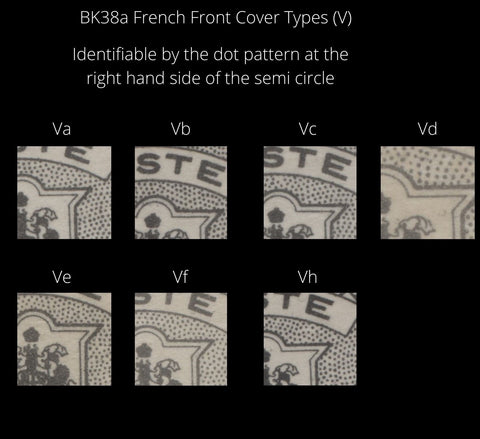

Rate Pages
The main complicating factor of this issue, which forms the basis for how the booklets are organized in the catalogue are the rate pages. The early booklets and latest booklets from the end of the life of the 1949-1952 Postes Postage issue had no rate page at all. Then, the earliest booklets had the 6c airmail rate pages, followed by hand surcharged rate pages, machine surcharged rate pages, 6c and 7c rate pages, before ending in 7c and 5c rate pages.
Here are some illustrations of the machine printed types.
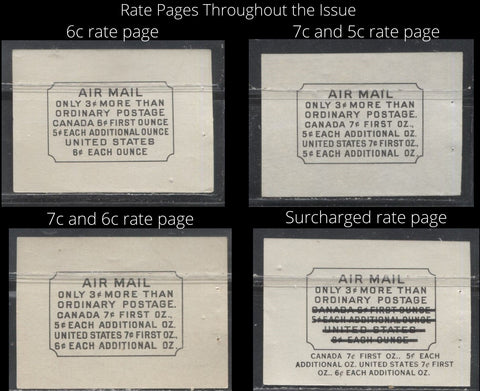
Conclusion
This provides a brief, broad overview of the War issue booklets, and hopefully has helped you make some sense of these booklets. Once you become comfortable with the varieties shown here, the next step would be to add the bilingual booklets into the mix.


2 comments
Appreciated the effort in making us document what we have or not in our collection or accumulation.
It will be my pleasure to buy evrything I am missing
Chris, I found this post extremely useful. Dozens of duplicate booklets I was planning on selling were actually different examples of the front and back covers, and are now in my album. I hope you will follow up with the bilingual issues.